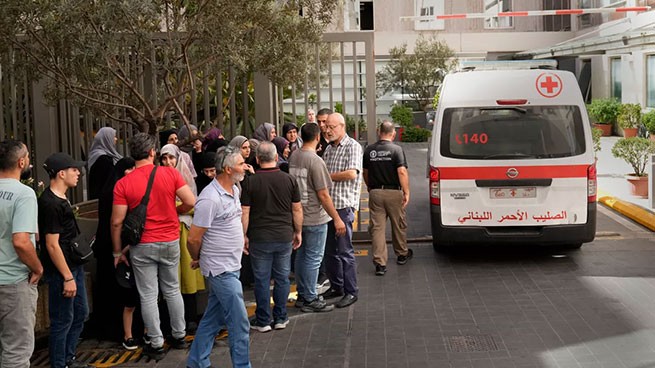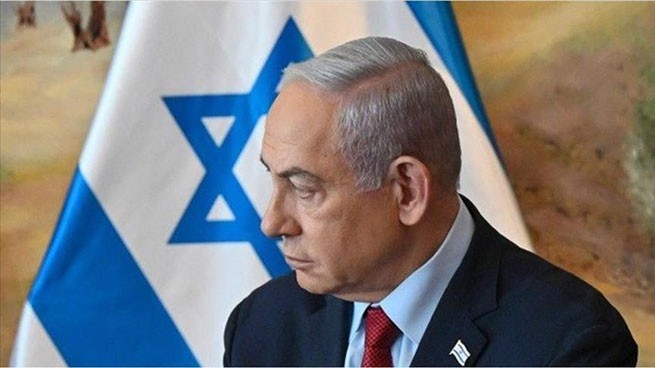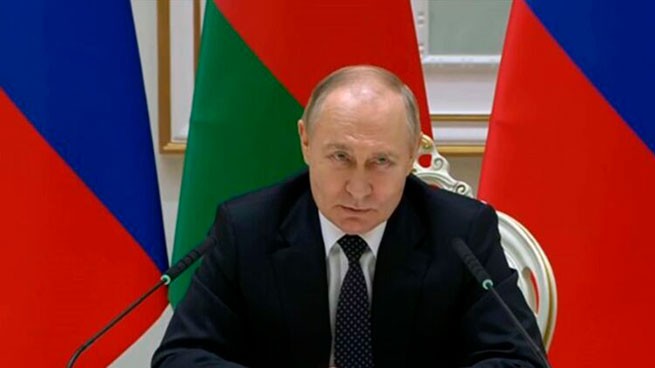Putin's statement “peace proposals” (in particular, with the condition of transferring Kherson and Zaporozhye to Russia) was expectedly rejected by Ukraine and criticized in the West as absolutely unacceptable.
But the question remains – why was this done and will it have any practical consequences? Several explanations have been put forward over the past few days.
1. This is a tactical move on the eve of the summit in Switzerland, to interrupt its agenda, and also to show Putin's readiness for negotiations, albeit with the introduction of inflated starting conditions. That is, according to the principle “they want the 1991 borders, we want the regional borders, we will agree on stopping the war along the front line.” Plus, the demand for regional borders may be an attempt by the Russian Federation to transfer the Russian-Ukrainian conflict into the format of an “ordinary territorial dispute” (“they consider Mariupol and Crimea to be theirs, and we consider Zaporozhye and Kherson to be ours”).
2. This is preparation for a serious escalation. In the form of either a large-scale offensive on the front in Ukraine, or some kind of ultimatum to the West regarding the crossing of further “red lines” (for example, after the expected transfer of F-16 aircraft, especially if they take off to carry out combat missions from airfields in NATO countries). In other words, these “peace proposals” are put forward not to be accepted, but to be rejected. Parallels are drawn with the demands of the Russian Federation on the eve of the invasion: to NATO and the United States – not to accept Ukraine into the alliance (December 2021), to Ukraine – to transfer the entire territory of the Donetsk and Luhansk regions to the “LDNR” (February 2022). “It is tempting to imagine that Moscow is simply putting forward an inflated negotiating position to launch a peace process on its own terms. However, as last time (in 2021-2022 – ed.), these conditions are not included in the negotiating field. Therefore, it is much more likely that what Putin presents as his peace proposal will precede a new escalation and expansion of the war,” writes Carnegie Center expert Alexander Baunov.
3. The Kremlin is not planning any sudden moves right now, and by putting forward its conditions it is demonstrating to Kyiv and the West its readiness to fight “as long as it takes”, right up to the complete exhaustion of Ukraine. That is, to continue to slowly advance from village to village, simultaneously striking at infrastructure and waiting until Ukraine exhausts its mobilization resource and will to resist. And therefore “accept the conditions now, otherwise it will be even worse later.”
However, setting such a high bar is also a risk for Putin. The invasion in February 2022, which was preceded by essentially similar “peace proposals”, did not go according to the Kremlin's plan, and already in March-April Putin was ready to sign the Istanbul agreements in order to quickly end the war, withdrawing the Russian army from most of the captured territories.
And if the expectations of a breakthrough at the front (if the Kremlin has any) are not met, and Putin will have to negotiate some other conditions for a ceasefire, then this, after he has outlined specific demands on Zaporozhye, Kherson and other points (which has sharply narrowed the room for maneuver for the Russian President), will definitely not look like a victory to him. Especially given that Putin's proposals are accompanied by an information campaign in the Russian Federation that creates inflated expectations of future victories, up to and including a “march on Odessa.” And if the reality turns out to be different, the effect may be similar to that which inflated expectations of the imminent “entry of the Ukrainian Armed Forces into Crimea” had on Ukrainian society. Or the one that was observed in Russia itself by the end of 2022 due to fundamentally unfulfilled expectations in Ukraine.
Putin's proposals also contradict China's peace plan and similar initiatives of other large countries of the “global south”, which envisage ending the war along the front line. This gives Ukraine the opportunity to conduct a counter-game that is dangerous for Russia, by initiating a ceasefire along the front line, thus trying to pull the “global south” over to its side (although Kyiv has not yet demonstrated readiness for this).
Moreover, Putin’s presentation of conditions that are obviously unacceptable to Kyiv encourages the West not to hope for any compromises or agreements with him, but to intensify arms supplies and other assistance to Ukraine.
If Putin himself had proposed as a condition for negotiations a halt to the war along the front line and had not demanded the transfer of territories currently not controlled by the Russian Federation, this could have been immediately supported by the countries of the “global south” and many in the West. But he decided to “take the maximum.” Either being fully confident that he would have enough strength to achieve his goals by military means. Or believing that even if he failed, Russia would then support any decision he made after the war, even if it did not coincide with the conditions he had publicly voiced.
The author's opinion may not reflect the opinion of the editors.







More Stories
Lebanese: 'We are paying for the war between Hezbollah, Israel and Iran'
Explosions at the ammunition depot in Toropets – what was stored there
White House acknowledges Zelensky's peace plan "realistic" and ponders his contribution to it (video)